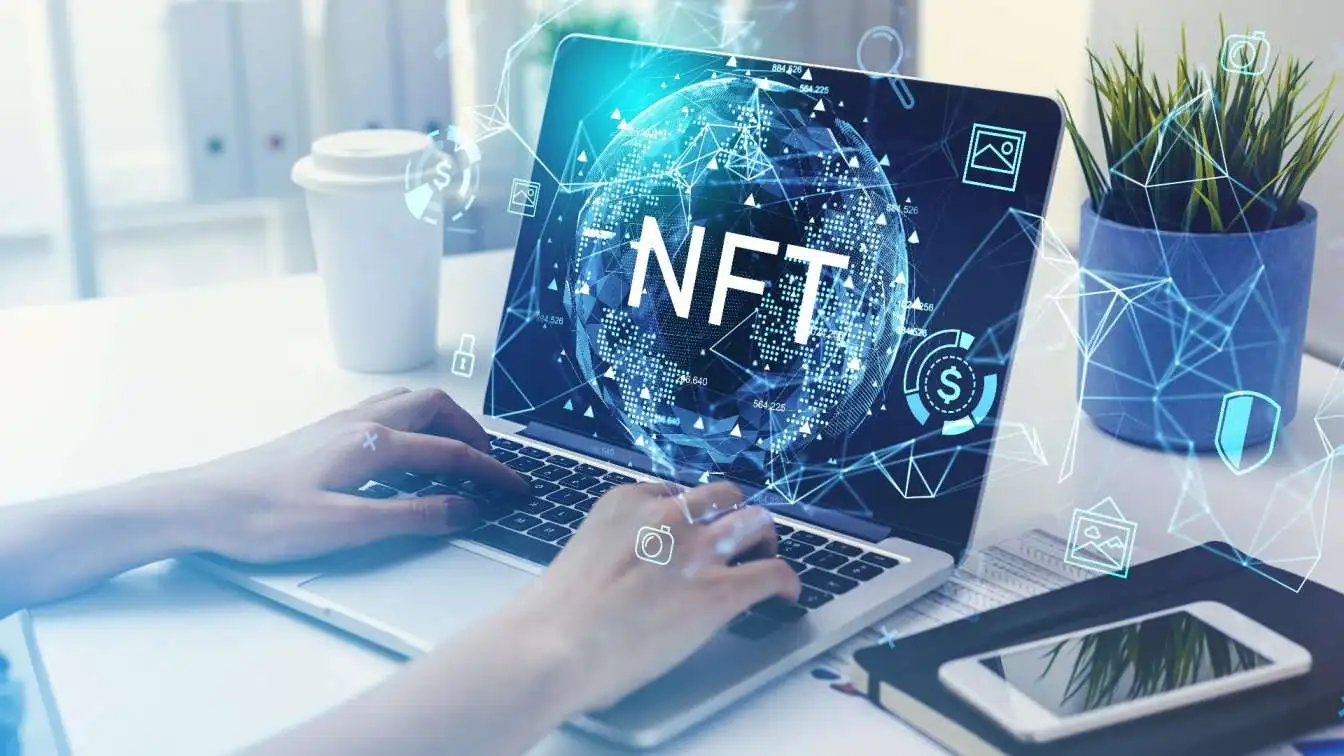
Direct creation of non-fungible tokens on NFT platforms lets you mint—that is, make or produce something—then publish your artwork on a blockchain. Including how to upload your artwork, select the appropriate blockchain, and where to put it for sale, this article will walk over the process required to make your first NFT.
What is an NFT, and how may one be created?
A widespread misperception surrounding NFTs is that the image, video, or other digital thing is the NFT. The token itself, though, hashes data kept on the blockchain. Tagged with metadata, the digital item is kept somewhere else, say Amazon Web Services or another hosting provider. This is why, on an NFT auction site, you may right-click on the photo and save it—just the image. You are not the owner though since your copy lacks the information connected with the NFT. You have a fake copy in a sense.
A token, in this aspect, is the item's information hashed into an alphanumeric string. This token is kept on the blockchain and establishes ownership of a digital object.
Creating an NFT is relatively simple. One can accomplish so on a minting supported NFT marketplace or crypto exchange. Here are some general steps for making your NFT.

Step 1: Figure Out What You Want to Create
-
NFTs are often related to a piece of digital art. This may be an image, an audio production (such as a song), or even a brief video clip (such as an animated GIF). The idea is to create a unique piece of digital media that can be sold, just like selling a painting at an art gallery.
-
When making an NFT, it's crucial to ensure that you hold the rights to the digital media you use, as establishing an NFT from media you don't own may result in legal implications from the legitimate owner.
Step 2: Choose a Blockchain
- There are various blockchains that can mint your NFT. This blockchain will preserve a permanent record of everything, therefore it’s vital to choose the one that matches your requirements.
Ethereum
-
The most prominent NFT blockchain is Ethereum, which hosts thousands of NFT collections. Ethereum NFTs are constructed via the ERC-721 and ERC-1155 standards, which record the metadata of the NFT on the Ethereum blockchain. The ERC-721 standard was established by the same group that developed the ERC-20 smart contract and defines the basic interface—ownership details, security details, and metadata—required for exchanging and distributing tokens.
-
This blockchain currently works utilizing the proof-of-stake (PoS) consensus, making it considerably more eco-friendly than it used to be. Most NFT marketplaces support the generation of Ethereum NFTs, albeit moving NFTs on the Ethereum blockchain may come with hefty gas fees.
Solana
-
The nearest competitor to the Ethereum blockchain is Solana. Designed as a speedier, lower-cost alternative to Ethereum, Solana offers transaction fees of less than $0.01 and a growing number of compatible apps for NFTs.
-
In addition, Solana utilizes both the proof-of-history (PoH) and PoS consensus techniques and offers substantially faster transaction rates than Ethereum.
Flow
-
Flow is another PoS blockchain developed for NFTs and decentralized gaming apps, and it is host to the popular NBA Top Shot NFT collection.
-
Many additional sports clubs have launched marketplaces on the Flow blockchain, making it popular for sports-focused NFT creation.
-
Several different blockchains allow NFTs, each with its own community and decentralized apps (dApps) for creators and NFT owners.
Step 3: Set Up an NFT Wallet
-
Once you choose a blockchain, you will need a digital wallet that supports that blockchain to store your NFT. To build a wallet, you will need to download the crypto wallet app and give a username and password. You should also store any private keys and recovery phrases outside of the wallet (offline) for security and backup purposes.
-
There are several popular wallet apps that support several blockchains. Here are a few:
-
MetaMask: MetaMask is a popular crypto wallet that supports a broad variety of cryptocurrencies, as well as both the Ethereum and Solana blockchains. It can be used as a mobile app or incorporated as a browser extension.
-
Coinbase Wallet: Coinbase offers a digital wallet that supports ERC-721 NFT tokens and Solana NFT collections. It can be downloaded as a mobile app or added as a browser extension.
-
Ledger Nano X: If you want to keep your NFT keys in a secure hardware wallet, the Ledger Nano X supports both Ethereum and Solana NFTs.
Step 4: Choose an NFT Platform
-
An ever-growing range of NFT platforms allows you to develop an NFT, but the best ones offer a full-service marketplace to list and sell NFTs. Here are a handful of the most popular NFT platforms:
-
OpenSea: The most popular NFT platform by far is OpenSea. With more than $20 billion in trade volume since its introduction in 2017 and more than two million NFT collections listed, OpenSea is the biggest platform for Ethereum-based NFTs. OpenSea launched support for Solana NFTs in July 2022.
-
Solanart: As the Solana-based NFT platform, Solanart hosts some of the most popular Solana NFT collections, with a clean user interface and a straightforward application process for minting.
-
Crypto exchanges: Several crypto exchanges support NFT creation, such as Binance Exchange. You can construct your NFT directly on the site, choose which blockchain you choose, and mint or create the NFT immediately.
Step 5: Create the NFT

Once you have picked a platform, constructing an NFT is relatively basic. Here is an example for generating an NFT on OpenSea:
-
Connect your wallet: During your OpenSea account signup, you are prompted to connect your wallet. This will ask you to sign a verification on your wallet app.
-
Create a smart contract: In the OpenSea Studio, select "Create," then "Create a new collection." This brings up a screen where you construct a smart contract. You drag and drop your media, name the contract, choose your token symbol, choose your blockchain, and click continue. You'll be prompted to sign it in your wallet.
-
build the NFT: Once you have built the collection, you'll be led to a screen to build an NFT. Click on "Create an NFT." Here, you choose your NFT name and how many to make, provide a description, and provide an external link if necessary or add traits. Browse for or drag and drop your media to the box, click "Create," and sign in your wallet.
Step 6: List the NFT for Sale
-
Listing an NFT for sale is simple; certain NFT platforms let you to do this for free. Once your NFT is created and in your wallet, you can simply tap the “sell” button on the platform of your choice. Then, choose the price you wish to list it at and how long you want the sale to last.
-
Once the information of your sale are filled in, you may create the listing. This will require you to sign a few transactions in your digital wallet, which may include paying transaction fees on your chosen blockchain. Solana transactions are modest, often less than $0.01, whereas advertising an NFT on the Ethereum blockchain can cost more, depending on the network fees at the moment of listing.
Read Also: Are NFTs Securities or Collectibles
How Much Does It Cost to Sell an NFT?
Once the NFT has been listed, it should have a unique URL you can share with others. Sellers pay a modest fee to the NFT marketplace when a purchase is made; for example, Binance charges a 1% platform fee as well as other costs, while OpenSea charges a flat 2.5% of the selling price.
Gas fees paid to the blockchain will add to your costs. For example, OpenSea lists one-time and reoccurring blockchain charges that you could incur:
-
The first time you list an NFT in a collection (one time)
-
The first time you utilize a specific coin (one time)
-
Deploying a smart contract (one time, every time you deploy a new one)
-
Buying an NFT (recurring)
-
Transferring an NFT (recurring)
-
Minting an NFT (recurring)
When you establish the NFT, you can add in a royalty fee that pays you a percentage of the transaction each time your NFT is later sold. Creators can earn up to 10% for every sale.
How Much Does It Cost to Create an NFT?
It depends on the platform you choose to generate it and the fees it charges. Some platforms charge one set fee; others charge several fees. You should also consider the time it takes to create whatever it is you're generating the NFT from and the expenditures involved in creating it.
The Bottom Line
Creating NFTs involves a fundamental understanding of minting, blockchain, crypto wallets, marketplaces, and gas costs. Once you understand how NFTs function, getting started with them is easy because much of the process is automated—except for deciding what to transform into an NFT.
